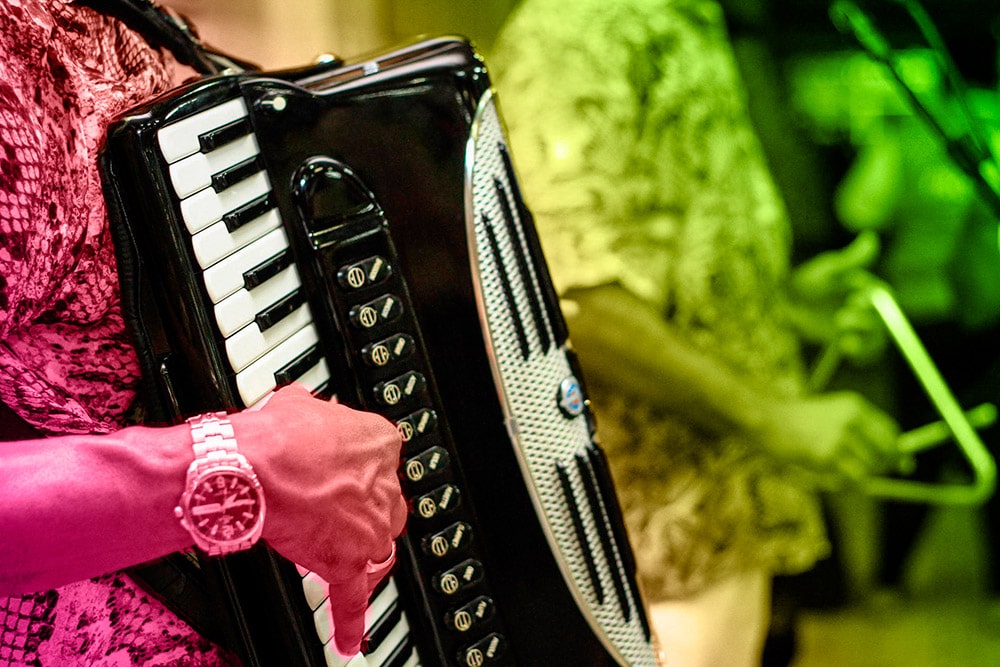Forró is a typically northeastern artistic expression that emerged in the 19th century in Pernambuco, a region where popular dances took place. The term came from the name “forrobodó”, which can mean drag your feet, confusion, or party. According to historians, forró arrived in Brazil along with African slaves, who at that time were sent to both the northeast and Rio de Janeiro.
The style, characterized by the sound of the accordion, triangle and zabumba (a type of large drum used in a lot of traditional Brazilian music), is associated with a dance between couples, where their bodies are very tightly glued together and the dance moves involve sweeping, or dragging their feet across the floor. The rhythm of forró gained huge popularity throughout the nation from 1950 onwards, with the song “Forró de Mané Vito” performed by Luiz Gonzaga, and it is responsible for popularizing the accordion in all regions of Brazil.
In the beginning, the compositions were inspired by customs of the Northeast and the people of the sertão (the arid planes of Ceara and the Northeast). This is why the lyrics are used to portray the daily life of these people, from the joys to the difficulties and sorrows. Of course, many of the songs express feelings of love, nostalgia and memories of the region.
If one takes a deeper look at the history of Forró as a musical genre, one will find that Forró is a blend of several traditional Brazilian music styles, such as xote, baião, xaxado and the traditional “arrasta-pé”. However, in the mid-1970s and early 1980s, this genre began to take on other aspects thanks to the advent of new musical instruments coming to the scene. And it didn’t stop there, in the 90’s electric guitar, rock drums, electric bass, keyboards and saxophone, were also thrown into the mix, not to mention the stage performances with dance choreography.

The evolution of Forró
It is possible to divide the history of forró into three distinct phases.
The first was marked by the style of baião that was released to the masses by Luiz Gonzaga in the 50’s. That’s why to this day he is known as the king of Baião. He was also responsible for opening the door for the emergence of other nationally famous artists from the Northeast such as Jackson do Pandeiro, Dominguinhos, Marinês and Sivuca, among others.
The second phase of forró began around 1975 and was marked by musicians beginning to mix pop rock with traditional forró. Musicians such as Alceu Valença, Elba Ramalho, Geraldo Azevedo, Zé Ramalho and Nando Cordel clearly stood out.
The third generation of Forró, which began in the 1990s, is known for its inclusion of electric instruments, particularly where the accordion gives way to the electronic organ. The musicians of this phase also added other musical genres to forró, such as the romantic sertanejo, the country music of Brazil. Thus, the formation of groups made up of many members and dancers became common. Among the bands that achieved success and represent this period are Calcinha Preta, Magníficos, Mastruz com Leite, Aviões do Forró, among others.
Have you enjoyed getting to know about the music style of forró?
Also read: Fun facts about Ceará
